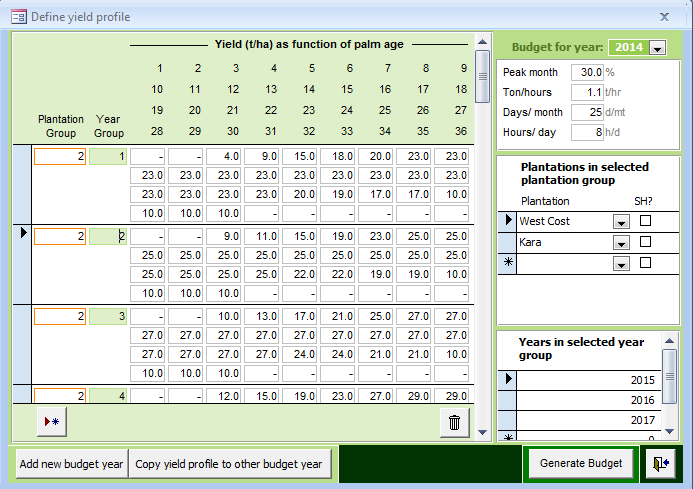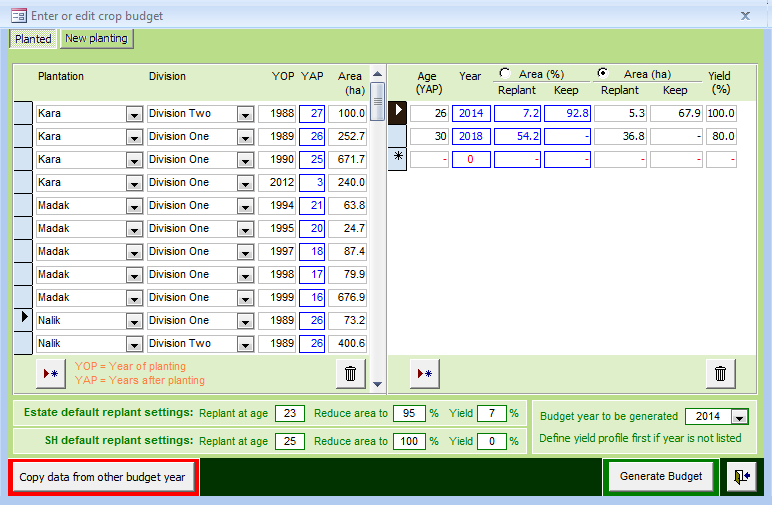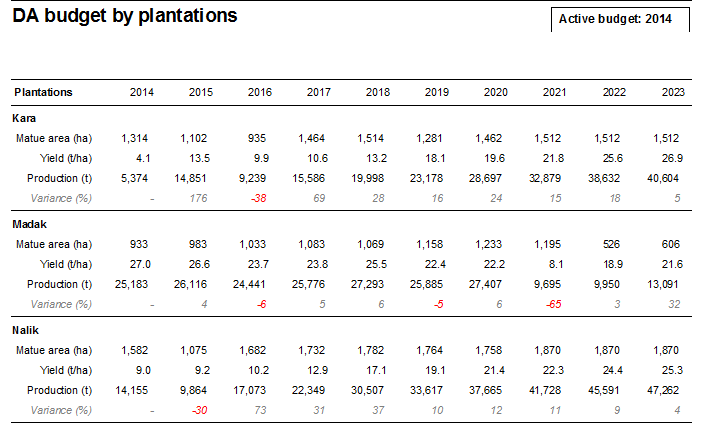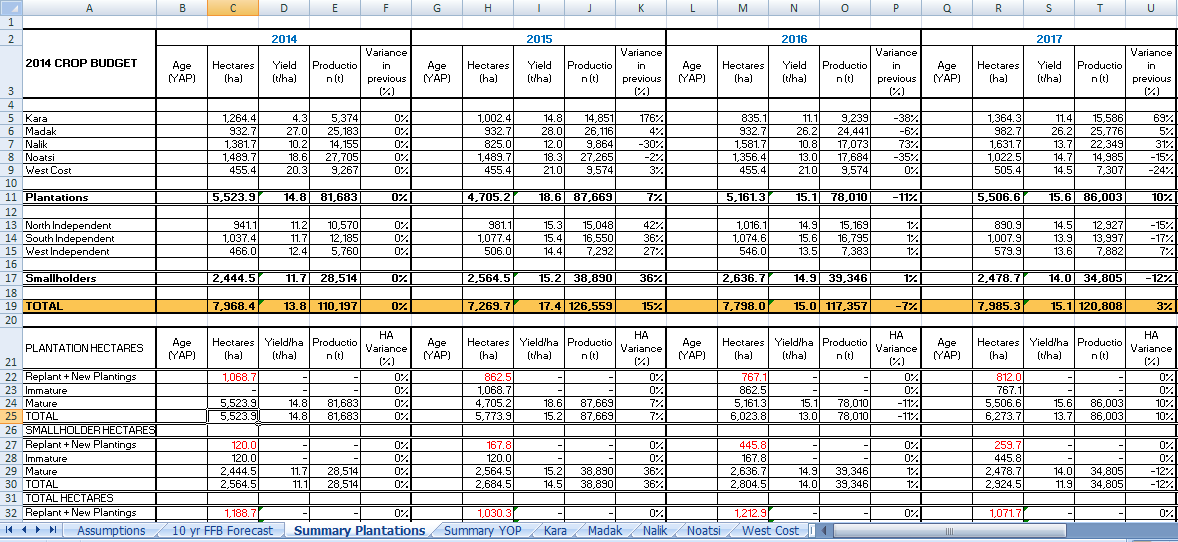OMP Ten Year Crop Budget (OMP-TYCB) is an application to project your oil palm plantation’s crop output over the next ten years, taking into account the changing plantation age profile as well as replanting and planned new plantings. A reliable long-term estimate of FFB production is an essential ingredient for oil palm managers who have to make decisions affecting the long-term future of the company. Specific examples of such decisions might be whether the milling capacities must be extended, whether new shipping/storage facilities or housing compounds need to be built or whether the company can enter into binding long-term agreements with their customers.
Expected yield profiles
The FFB yield projections in OMP Ten Year Crop Budget are calculated by combining information on the current plantation age profile, plans for new plantings and replanting dates and the expected yield profile by palm age. The yield profile by palm age can be entered by the manager separately for different areas of the plantation as well as different planting years. In this way, it is possible to account e.g. for different planting materials being planted in different parts of the plantation or for things like palm spacing or other planting parameters that might be different for plantings created in different years. Having entered the expected yield by palm age, the second piece of information needed by OMP Ten Year Crop Budget to calculate future FFB production is the current plantation age profile. For each division and each field, the manager must therefore enter the number of hectares corresponding to different planting years.
Take replanting and new plantings into account
If only natural age progression needed to be taken into account, this information would be sufficient to calculate the FFB production projection. However, it is clear that for plantations of a certain age replanting effects will have important consequences. In OMP Ten Year Crop Budget, managers can enter default replanting parameters including the age in years at which palms are to be replanted and what percentage of the normal yield will be achieved in the year in which replanting takes place. The second option makes it possible to account for the fact that areas which are being replanted can still contribute to the annual production if the replanting does not start right at the beginning of the year. Furthermore, it is possible to define a multiplication factor that describes how the new and old plantation areas should be related. This can be used for example to plan for larger buffer zones being implemented upon replanting, so that new block areas could for example be only 97% of old block areas. The default replanting parameters can be entered separately for core plantation areas and for smallholder areas.
For each plantation area, managers can still enter specific replanting plans which would override the default parameters mentioned above. In particular, it is possible to plan for replanting in several steps in different years. Finally, OMP Ten Year Crop Budget allows managers to enter plans for scheduled new plantings that are not yet part of the plantation but will be added in the coming years.
Data analysis and export
Using the information discussed above, OMP Ten Year Crop Budget automatically makes a projection for the plantation age profile and the FFB production for each of the next 10 years. Data analysis forms and reports allow the manager to either see an overview of projected yield by year as well as detailed information on how much is contributed by each plantation area and each age group.
A global filtering tool can be used to focus on specific areas of the estate or on regions planted in a certain year. To complement the built-in data analysis tools, the application includes a feature to export data on the projected crop budget in the form of a certain pre-formatted Microsoft Excel spreadsheet, which includes comprehensive budget information on multiple tabs and can be used for further custom data analysis. These features make OMP Ten Year Crop Budget into an excellent long term planning tool which can be used to compare different scenarios for planting or replanting or to compare how expectations and budgets change from one year to the next.




